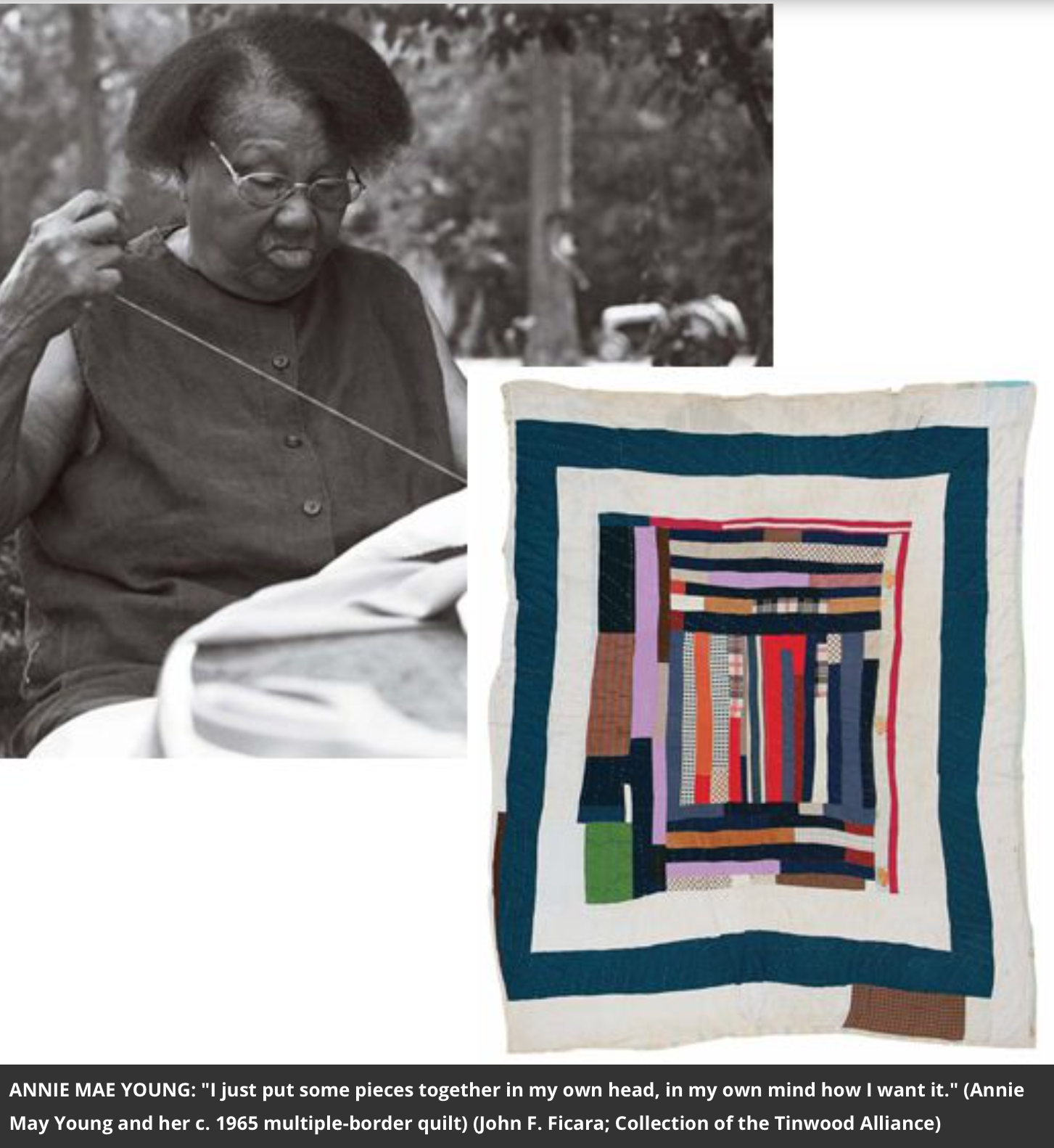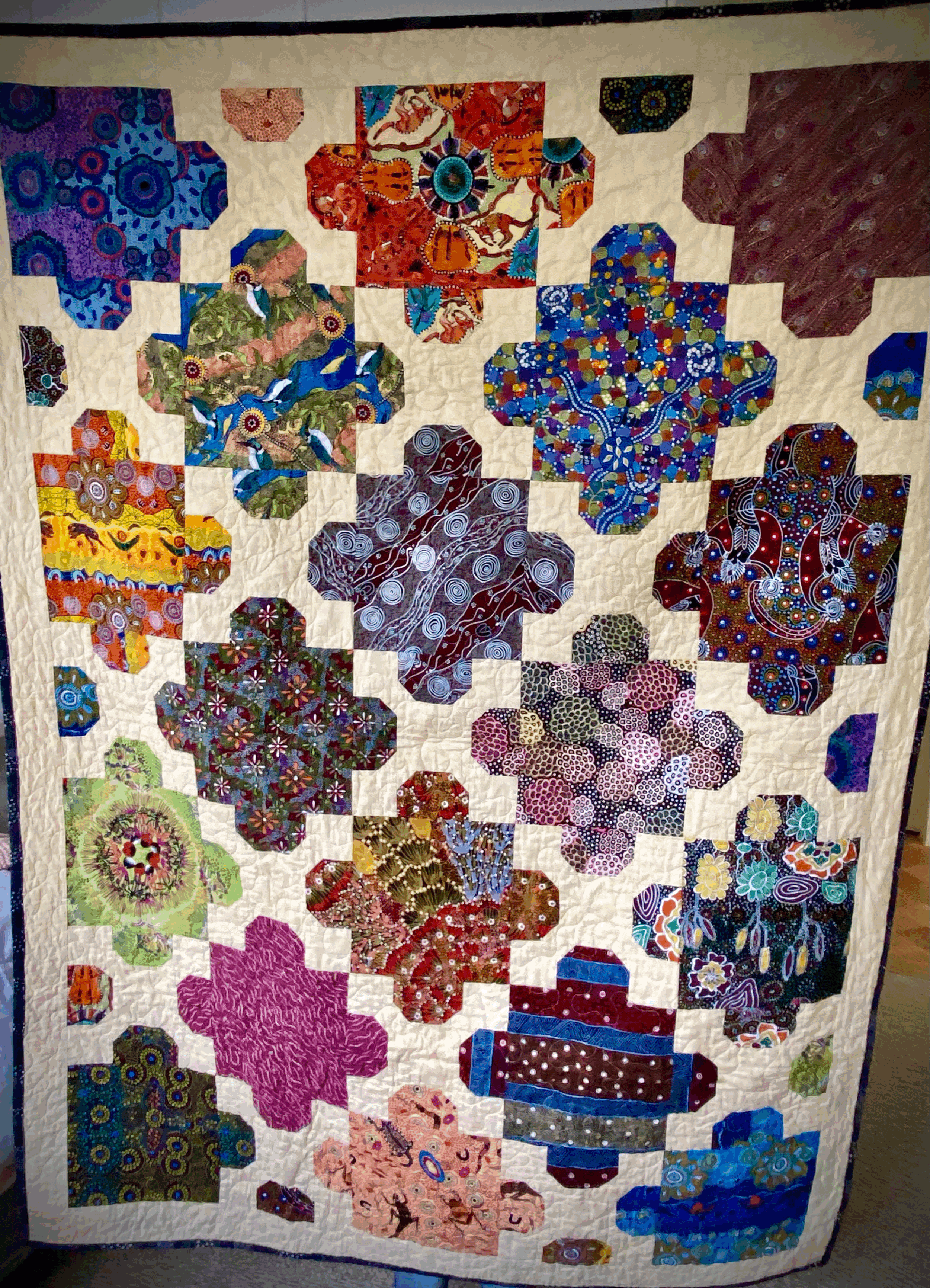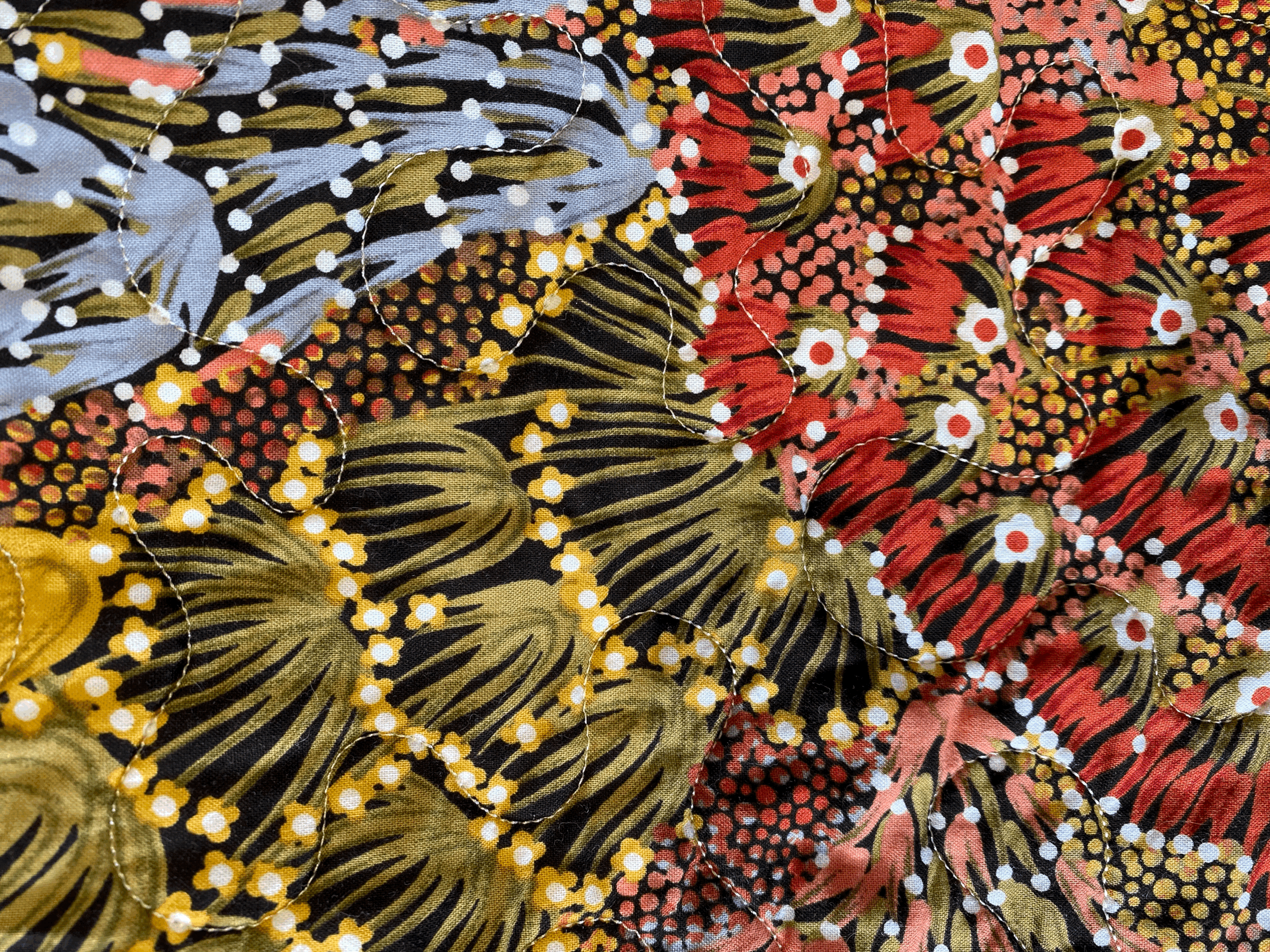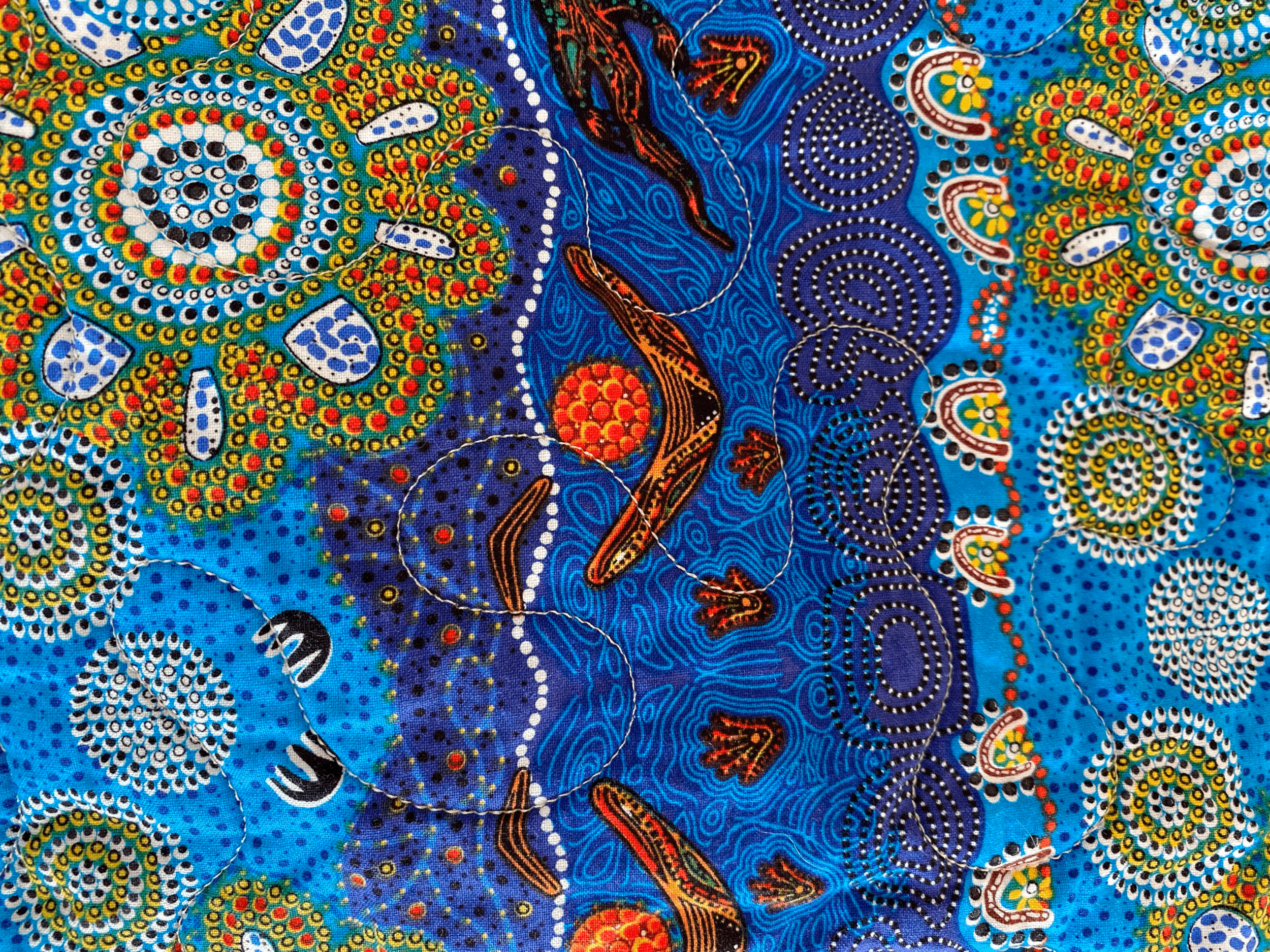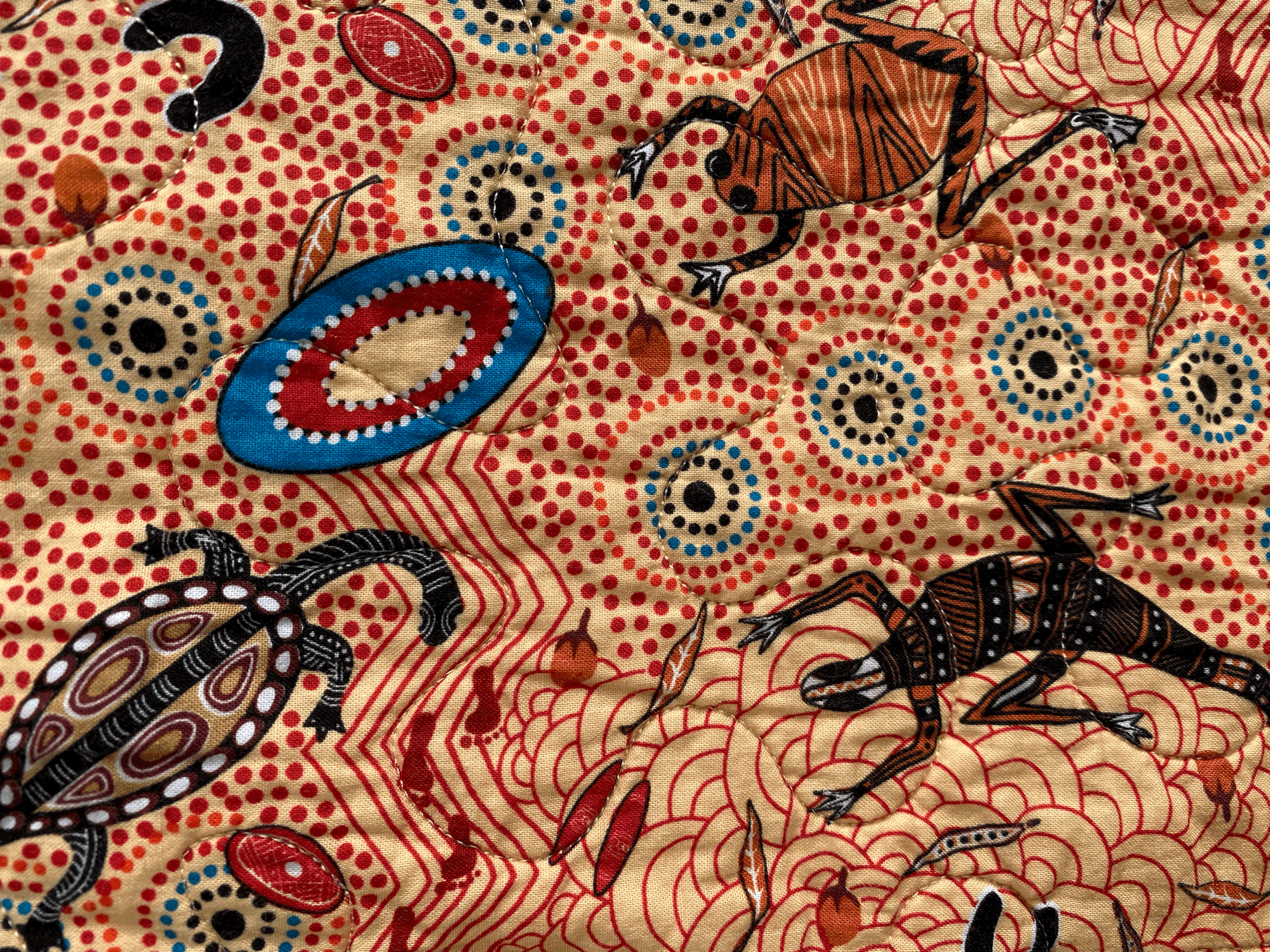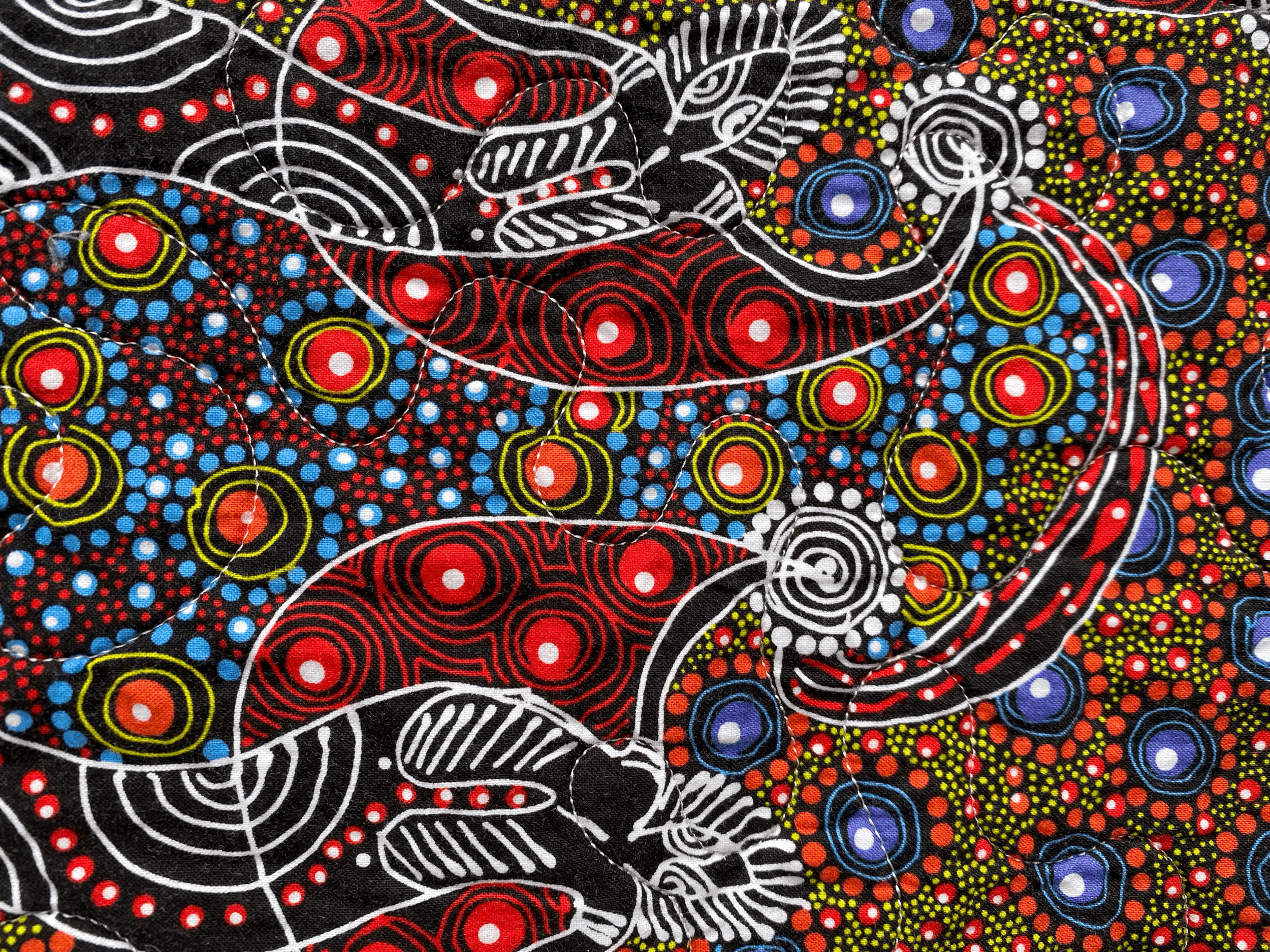Stitches of Kindness
The ‘Dear Jane’ Quilt - made in 1863 during the American Civil War by Jane A Blakely Stickle (1817-1896). Bennington Museum, Vermont, USA.
I wish to share with you today, a short, true story, that is both beautiful and tragic in the same breathe. A story that traverses three continents, during a global pandemic, with a wonderfully synchronistic element. It’s very sad, but tinged with joy, creativity and kindness, and I think needs to be shared in the world.
The children had a wonderful teacher at our school in Memphis. She loved my ‘Aussie girls’ and really helped them settle into the American and Southern way of life. She was fun and loving, but direct and strict – kind of the perfect teacher really! During 2020, as if life wasn’t already hard enough, the teacher’s husband was travelling in South America for work, and sadly, was involved in a tragic accident and passed away. It was devastating for this wonderful teacher and her children, but true to her strong work ethic, she was back in the classroom a short time later doing what she loved.
The company her husband worked for were apparently wonderful, and helped her greatly in her time of bereavement. She was unsure of how to thank them, but decided that she would make them a quilt as a way of saying thank you. More on that in a moment…
Firstly, a little about quilting:
Quilting defines the act of stitching together two layers of fabric between padding. It can be traced back as far as ancient Egypt.
Quilting is immensely popular in America with different styles of quilts ranging from Early American and Colonial Quilts, Civil War Quilts, Twentieth Century Quilting, and Modern American Quilting. Quilts express the history of America, and often also families, where quilts are passed down from generation to generation, with stories attached.
A favourite of mine are the beautiful quilts of Gee's Bend, created by a group of women and their ancestors who live or have lived in the isolated African-American hamlet of Gee’s Bend, Alabama along the Alabama River.
“The quilts of Gee's Bend are among the most important African-American visual and cultural contributions to the history of art within the United States. Many of the residents in the community can trace their ancestry back to enslaved people from the Pettway Plantation.”
Annie Mae Young is one of the Gee’s Bend quilters.
“I never did like the book patterns some people had. Those things had too many little bitty blocks. I like big pieces and long strips. However I get them, that's how I used them. I liked to sew them however they be. I work it out, study the way to make it, get it to be right, kind of like working a puzzle. You find the colors and the shapes and certain fabrics that work out right. I always like cotton, but not the other stuff too much. Didn't like silk, or crepe, and didn't use wool much. I stayed with what I started with: old clothes that I could tear up. It always come out level.” Read more about Annie Mae Young and the Gee's Been quilters here.
This one is particularly striking:
Interestingly, when I visited the ‘Slave Haven’ home in Memphis - used as part of the Underground Railway in the Southern US to help free slaves in the early to mid-19th Century - it was fascinating to learn about the ‘coded quilts’ that were used during this time. Quilts with patterns named ‘monkey wrench’, ‘tumbling blocks’, and ‘North Star’ among others, appear to have contained secret messages that helped direct slaves to freedom. Some dispute this claim, but whether it’s true or not, it certainly makes for an interesting story. You can read more here.
And I just love some of the the more modern quilts being made today:
‘At the end of the day’ Natasha Kerr, 2007. Victoria & Albert Museum, London
“Broom Jumpers,” 2019 (quilted and appliquéd cotton, wool and chiffon | 58″ x 98″). See more of this wonderful work at My Modern Met.
But back to the teacher story…
The teacher approached me at the school fundraiser earlier in the year to discuss the quilt she had made. It turns out that the company for whom her husband worked, was based in Adelaide, South Australia – the very place I grew up, and where I was planning to visit shortly after returning home to Melbourne, once we’d completed quarantine in Sydney. With concerns over freight from one continent to another due to COVID, the teacher wondered whether it would be possible for me to take the quilt back with us to Australia and post it. I gladly agreed, but offered to hand deliver it and take a picture of my girls gifting it to the recipient. I safely packed away the quilt into the ‘Melbourne luggage’ that was being sent by air freight, so that it would be in Melbourne when we arrived home (not the container luggage that was being shipped and would arrive months later, or the luggage that we were taking on our road trip and into quarantine). The quilt exchange was planned for the end of June when I was due to be in Adelaide – after I’d collected it from Melbourne.
We’re living in the COVID world, so of course these plans went astray. When we were in Hotel Quarantine in Sydney, Melbourne was still in lockdown #4, so we decided to bypass Melbourne and go straight to South Australia first – without the quilt.
After a couple of weeks in South Australia visiting my family it was time to head home to Melbourne – with a plan to visit Adelaide again in a month, WITH the quilt. But of course, lockdown #5 happened and that trip was cancelled, and now we’re in lockdown #6 with no end in sight, which means no travel to South Australia!
What to do with the quilt….???
Well, admire it for a start. Incredibly, the teacher has managed to find some beautiful fabrics representing the indigenous culture of Australia. I absolutely adore handmade products that have been made with thought and love, and it was a moment of pure joy as I explored the intricacy of the colours, the patterns and the meaning in this stunning quilt.
My enthusiastic idea of hand delivering the quilt was now sadly out the window – unless I waited until borders reopened (who knows when that will be, though), but I’m happy to say that it has now been posted to the company in South Australia, finally.
Much like the historical quilts of the past, this quilt now has its own unique story. It will live on to represent both a tragic event, but also the kindness shown to the teacher and the reciprocal creativity and thanks given back. What a wonderful circle of light threading its way through the world.


